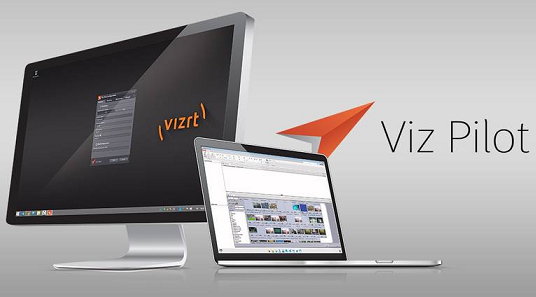
Viz Pilot User Guide
Version 8.6 | Published October 23, 2020 ©
Introduction
Welcome to the Viz Pilot User Guide.
This introduction contains information about the following topics:

The following terms are used in this guide:
-
Background scene: A background scene contains logic that enables an operator to toggle the states of multiple front scenes. A typical background scene also contains back plates and transition effects for each state of the front scenes. For example, a lower third may be on-air at the same time as a bug, and the lower third may be taken off-air without taking the bug off-air or reanimating it.
-
Component: In Template Wizard, components are used to create text fields, buttons, drop-lists, database connections etc.
-
Control plugins: A graphics scene can contain all sorts of objects that can be controlled from a template such as text, back plates, images, colors and more. The graphics designer uses control plugins to expose objects to make them editable in a template. When importing a scene to Template Wizard, the exposed objects with control plugins appear as list items with check boxes.
-
Control Object: Every scene with control plugins must have one instance of the control object plugin at the root level of a scene tree. Control Object reads the information from all other control plugins. When a scene is imported to Template Wizard, the information about other lower level control plugins is read by Control Object.
-
Data element: A data element is a template filled with data. A data element contains a reference to its template (original) just as the template contains a reference to its scene. A data element contains a set of data and references to where data such as images and video clips can be found. In most cases, it's the data element that is played out on-air, and not the template.
-
Front scenes: A front scene is a standard scene that makes up one part of a transition logic scene.
-
Newsroom Component: In a Newsroom Computer System (NCS), the Newsroom Component (NrC) is used to add data elements to a story. The newsroom component is an embedded application in the NCS that connects to a database of templates. The templates can be filled with text, images, video and maps. Vizrt’s newsroom component is called Viz Pilot News.
-
Scene: Scenes are built in Viz Artist. These can be either a single scene, or one part (layer) of a combination of scenes (transition logic).
-
Template: A template is a customized interface created in Template Wizard. The template is used in Director or Viz Pilot News to create data elements that are added to a playlist for playout. A template is based on one or several (transition logic) Viz Artist scenes.
-
Transition Logic Scene: A set of scenes built in Viz Artist. Consists of a background scene and one or several front scenes. The transition logic scene contains one scene (the controlling scene) that controls the state of or toggles a set of scenes (the layered scenes). The controlling scene toggles in and out of the layered scenes using pre-configured or customized transitions effects. This means that scenes that are already on-air do not need to be taken off air. For example, a lower third may be on-air at the same time as a bug, and may be taken off-air without reanimating or taking the bug off air.
-
Viz Artist: The design tool where the graphics scenes and all animations are created.
-
Viz Engine: The output engine used for playout of graphics, video, images, SDI sound and sound effects.
Feedback
We welcome your feedback on Vizrt products and documentation.
Please contact your local Vizrt customer support team at http://www.vizrt.com.